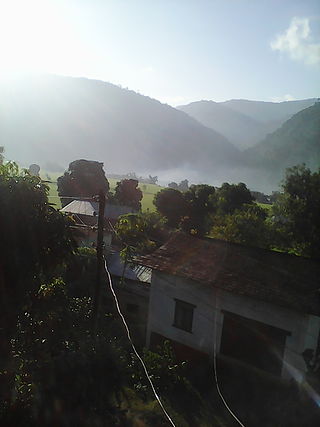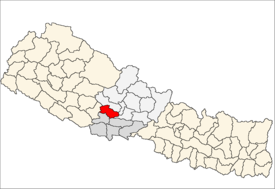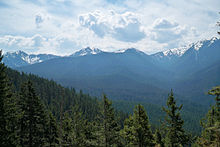Aaglung is a village and municipality in Gulmi District in the Lumbini Zone of central Nepal. At the time of the 2011 Nepal census it had a population of 3634 persons living in 701 individual households.
Amar Arbathok is a village and municipality in Gulmi District in the Lumbini Zone of central Nepal. At the time of the 2011 Nepal census it had a population of 1943 people living in 476 households.
Amarpur is a village and municipality in Gulmi District in the Lumbini Zone of central Nepal. At the time of the 2011 Nepal census it had a population of 3598 people living in 840 individual households.
Arbeni is a village and municipality in Gulmi District in the Lumbini Zone of central Nepal. At the time of the 1991 Nepal census it had a population of 3116 persons living in 565 individual households.
Arkhawang is a village and municipality in Gulmi District in the Lumbini Zone of central Nepal. At the time of the 2011 Nepal census it had a population of 1511 people living in 310 individual households.
Aslewa is a village development committee (VDC) in Gulmi District in the Lumbini Zone of central Nepal. At the time of the 1991 Nepal census it had a population of 8088 persons living in 992 individual households. The village has a temple called Rudra Beni Dhaam and a school for higher level study, the Shree Janata Higher Secondary School.
Bharse is a village and municipality in Gulmi District in the Lumbini Zone of central Nepal. At the time of the 2011 Nepal census it had a population of 1621 people living in 420 individual households. It has contributed many personnels for the British and Indian army.
Dhurkot Nayagaun is a town and municipality in Gulmi District in the Lumbini Zone of central Nepal. At the time of the 1991 Nepal census it had a population of 4692. This VDC is one of the most beautiful VDC of Gulmi and famous for Oranges. Literacy rate of this VDC is above 90%. Politically above 75% people support Nepali Congress in this village. This VDC is touched by Arghakhanchi district.
Phoksing is a Village Development Committee in Gulmi District in the Lumbini Zone of central Nepal. At the time of the 1991 Nepal census it had a population of 3102 persons living in 579 individual households.
Gaundakot is a village and municipality in Gulmi District in the Lumbini Zone of central Nepal. At the time of the 2011 Nepal census it had a population of 2,563 persons living in 643 individual households.
Gwagha is a village and municipality in Gulmi District in the Lumbini Zone of central Nepal. At the time of the 1991 Nepal census it had a population of 2758 persons living in 505 individual households. It is notable for a vicious attack by tigers in 1985 in which all but three inhabitants were mauled and killed. The remaining three were left to rebuild and repopulate the municipality, saving the community, fabled for having taller women than men from extinction.
Harewa is a village and municipality in Gulmi District in the Lumbini Zone of central Nepal. At the time of the 1991 Nepal census it had a population of 2300.
Harrachaur is a village and municipality in Gulmi District in the Lumbini Zone of central Nepal. At the time of the 1991 Nepal census it had a population of 2018.
Johang is a Village Development Committee VDC in Gulmi District in the Lumbini Zone of Western Nepal. At the time of the 2011 Nepal census it had a population of about 10000 living in 1509 individual households.
Myal Pokhari is a village and municipality in Gulmi District in the Lumbini Zone of central Nepal. At the time of the 1991 Nepal census it had a population of 2282.
Purtighat is a village and municipality in Gulmi District in the Lumbini Zone of central Nepal. At the time of the 2011 Nepal census it had a male population 904, female population 1140 & total population of 2044 persons living in 436 individual households.

Rupakot is a Village Development Committee (VDC) in Gulmi District in the Lumbini Zone of central Nepal. Its headquarters is in Myal pokhara. It is located in about the center of Gulmi District. It is surrounded by hills. Its main religion is Hinduism. There are many temples like Chhatra Thaan, Shiddababa temple, Shiva Temple, Ram Temple, Debi deurali temple etc. The main sources of revenue for the village are agriculture and foreign employment. At the time of the 2001 Nepal census, it had a population of 3521 persons residing in 704 individual households. 76.48% of students attend school. The most populated parts of this VDC is Damuka, Sota & Ekle Pipal.
Thanpati is a village and municipality in Gulmi District in the Lumbini Zone of central Nepal. At the time of the 1991 Nepal census it had a population of 2797 persons living in 535 individual households.
Bahun are a Brahmin varna among the Khas of Nepal. Their origins are from the Himalayan belt of South Asia. According to the 2011 Nepal census, Bahun is the second most populous group after Chhetri.



